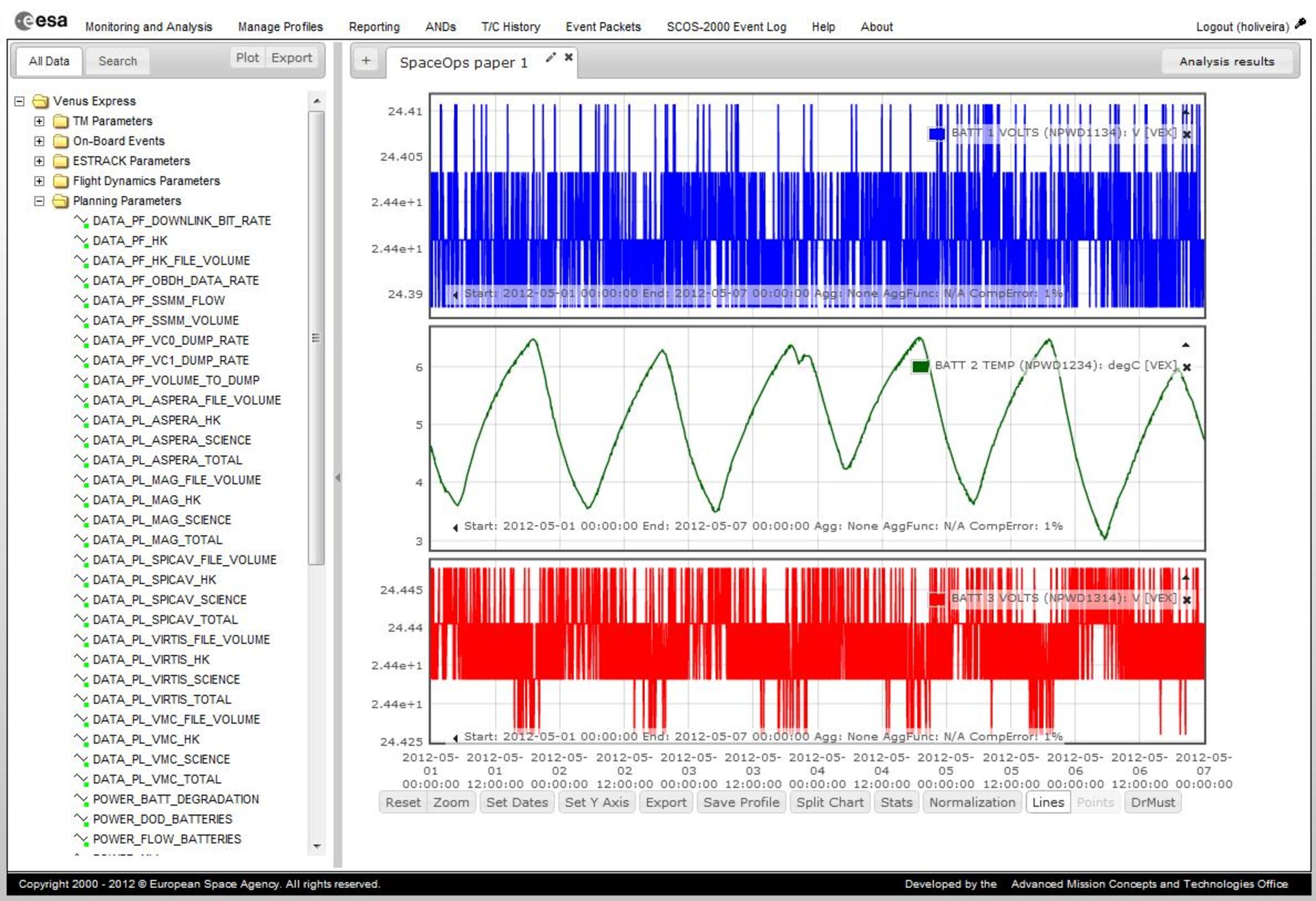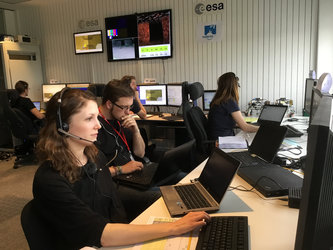WebMUST
A web-based client for MUST
The need for accessing spacecraft mission data from outside operations centres and sharing it with different teams and organizations has risen in recent years. Traditionally, clients for monitoring and analysis of spacecraft data are mostly based on rich-client applications which are cumbersome to distribute and update. Additionally, network security restrictions in most cases forbid this class of clients to retrieve data remotely via the Internet.
Keywords: monitoring, diagnosis, reporting, data access, data extraction, web-based collaboration
The Solution
WebMUST is a fully web-based graphical client for the MUST information system. It provides rich monitoring and analysis functionality with the only requirement of a modern web browser.
WebMUST is currently in use by most ESA spacecraft operations teams at ESOC, the Galileo team in CNES, science operations teams at ESAC and spacecraft design teams at ESTEC.
Technology
WebMUST is implemented with modern web technologies: HTML5, CSS and JavaScript with jQuery. It works on modern web browsers such as Google Chrome, Firefox and Safari, without requiring any third party browser plug-ins such as Flash or Java.
Development Team
WebMUST has been developed at ESOC by the Advanced Mission Concepts and Technologies Office together with representative of the SOHO mission operation team.
Description
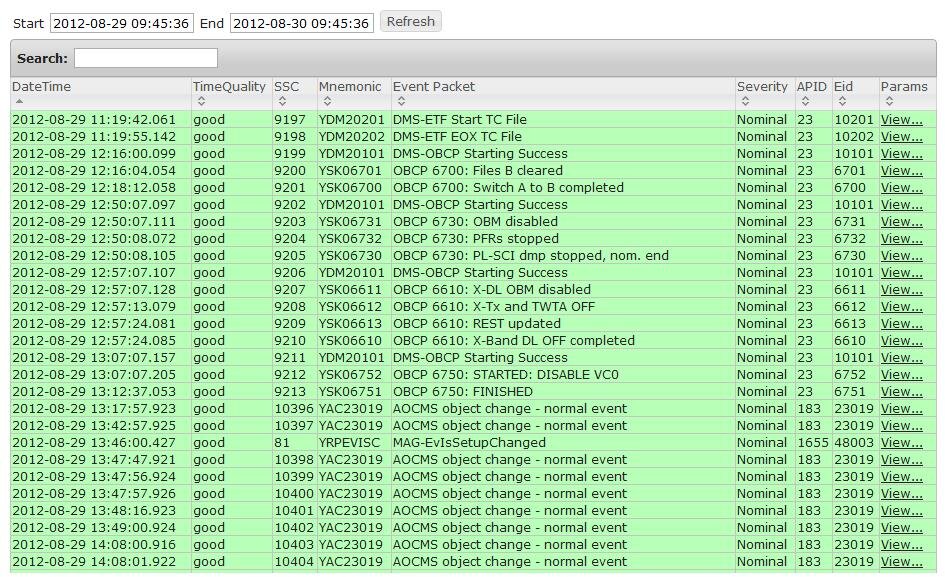
MUST (Mission Utility & Support Tools) is a framework and a collection of client tools that support the analysis, visualization, exploration and exportation of telemetry and ancillary mission data. The latest development in the MUST client suite is WebMUST – a fully web-based client for the display and analysis of mission data, such as spacecraft telemetry and events, telecommands history, flight dynamics and planning data, among other types.
The Monitoring and Analysis component of WebMUST provides a tree-based view of all data available in the MUST repository. Parameter data can be plotted in a rich and interactive graphical way, while other types of data such as events and telecommands are available in a searchable tabular format.
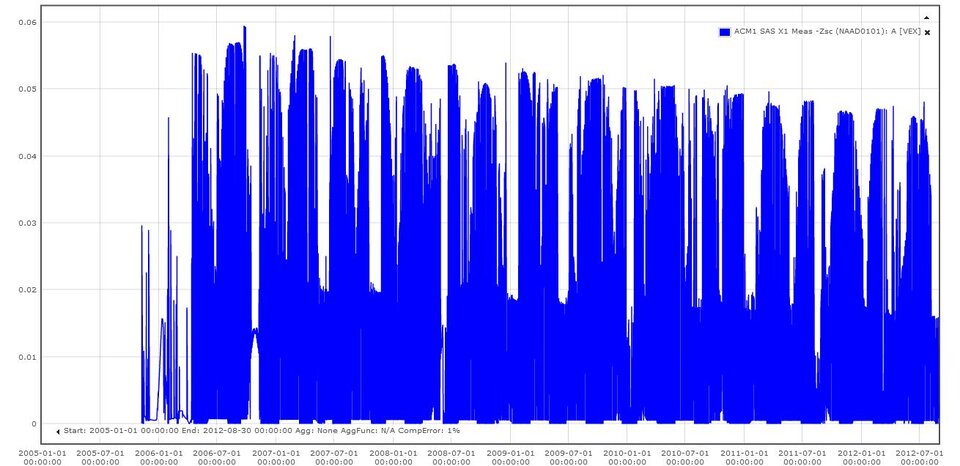
In WebMUST, all parameters are handled in the same way regardless of their individual origins. This allows plotting them together in order to discover potential correlations and helping to close the Planning-Execution loop, in the specific case of planning data. In addition, data from multiple missions can be displayed on the same WebMUST client.
Thanks to the use of technologies such as Viewport Resolution Aggregation and Fractal Resampling, with WebMUST is able to plot very large amounts of data in a reasonable amount of time.
All plots created in the Monitoring and Analysis view can be saved and automatically imported into Microsoft Word templates via the tight integration with the ORATOR tool. This functionality brings great savings in the effort required to generate periodical and usually repetitive reports.
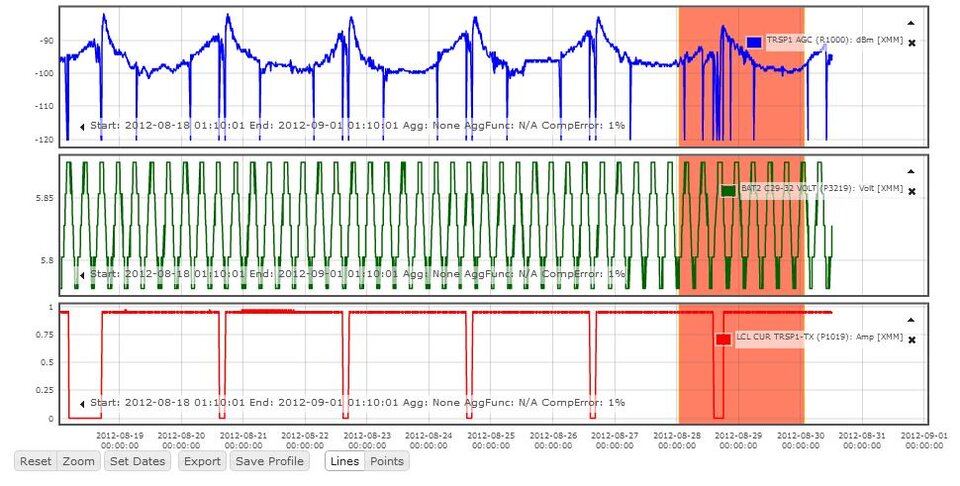
Several diagnosis tools have been incorporated into WebMUST. These tools include DrMUST, a pattern matching algorithm to perform correlation analysis when investigating spacecraft anomalies, and Novelty Detection, which autonomously detects unusual behaviours in spacecraft telemetry.
WebMUST is fully accessible via a web browser. Many Flight Control Teams at ESOC use it from home during on-call periods, via a secure VPN. For some missions, WebMUST is also accessible to industry partners and science teams, supporting collaboration between distributed teams.
WebMUST is a platform for innovation and experimentation of new technologies for the ESOC Future Studies section in direct collaboration with users from the ESOC mission teams, and is constantly evolving and incorporating new functionality.


